Refine search
Actions for selected content:
3023 results in Probability theory and stochastic processes
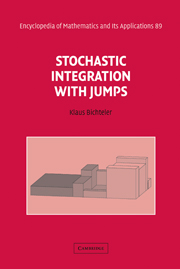
Stochastic Integration with Jumps
-
- Published online:
- 29 January 2010
- Print publication:
- 13 May 2002
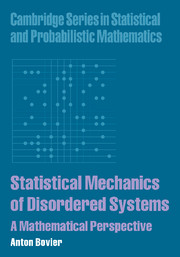
Statistical Mechanics of Disordered Systems
- A Mathematical Perspective
-
- Published online:
- 25 January 2010
- Print publication:
- 08 June 2006
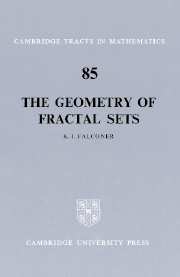
The Geometry of Fractal Sets
-
- Published online:
- 25 January 2010
- Print publication:
- 10 January 1985
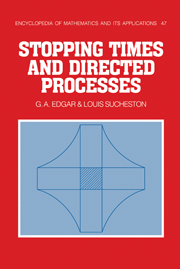
Stopping Times and Directed Processes
-
- Published online:
- 21 January 2010
- Print publication:
- 28 August 1992
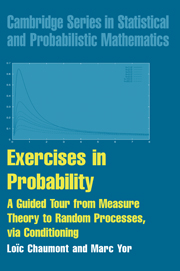
Exercises in Probability
- A Guided Tour from Measure Theory to Random Processes, via Conditioning
-
- Published online:
- 19 January 2010
- Print publication:
- 03 November 2003
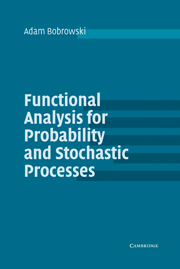
Functional Analysis for Probability and Stochastic Processes
- An Introduction
-
- Published online:
- 14 January 2010
- Print publication:
- 11 August 2005
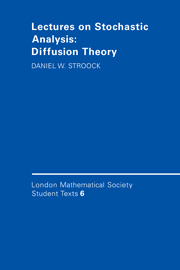
Lectures on Stochastic Analysis: Diffusion Theory
-
- Published online:
- 14 January 2010
- Print publication:
- 19 February 1987
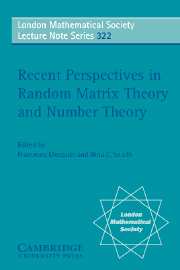
Recent Perspectives in Random Matrix Theory and Number Theory
-
- Published online:
- 06 January 2010
- Print publication:
- 21 June 2005

Understanding Probability
- Chance Rules in Everyday Life
-
- Published online:
- 23 December 2009
- Print publication:
- 26 July 2007
-
- Book
- Export citation
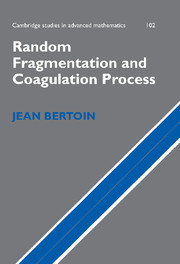
Random Fragmentation and Coagulation Processes
-
- Published online:
- 07 December 2009
- Print publication:
- 10 August 2006
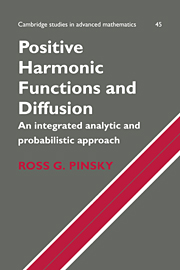
Positive Harmonic Functions and Diffusion
-
- Published online:
- 02 December 2009
- Print publication:
- 12 January 1995
5 - Free probability
-
- Book:
- An Introduction to Random Matrices
- Published online:
- 03 February 2011
- Print publication:
- 19 November 2009, pp 322-413
-
- Chapter
- Export citation
Index
-
- Book:
- An Introduction to Random Matrices
- Published online:
- 03 February 2011
- Print publication:
- 19 November 2009, pp 484-492
-
- Chapter
- Export citation
Appendices
-
- Book:
- An Introduction to Random Matrices
- Published online:
- 03 February 2011
- Print publication:
- 19 November 2009, pp 414-464
-
- Chapter
- Export citation
2 - Real and complex Wigner matrices
-
- Book:
- An Introduction to Random Matrices
- Published online:
- 03 February 2011
- Print publication:
- 19 November 2009, pp 6-89
-
- Chapter
- Export citation
References
-
- Book:
- An Introduction to Random Matrices
- Published online:
- 03 February 2011
- Print publication:
- 19 November 2009, pp 465-480
-
- Chapter
- Export citation
3 - Hermite polynomials, spacings and limit distributions for the Gaussian ensembles
-
- Book:
- An Introduction to Random Matrices
- Published online:
- 03 February 2011
- Print publication:
- 19 November 2009, pp 90-185
-
- Chapter
- Export citation
Frontmatter
-
- Book:
- An Introduction to Random Matrices
- Published online:
- 03 February 2011
- Print publication:
- 19 November 2009, pp i-vi
-
- Chapter
- Export citation
General conventions and notation
-
- Book:
- An Introduction to Random Matrices
- Published online:
- 03 February 2011
- Print publication:
- 19 November 2009, pp 481-483
-
- Chapter
- Export citation
Preface
-
- Book:
- An Introduction to Random Matrices
- Published online:
- 03 February 2011
- Print publication:
- 19 November 2009, pp xiii-xiv
-
- Chapter
- Export citation
